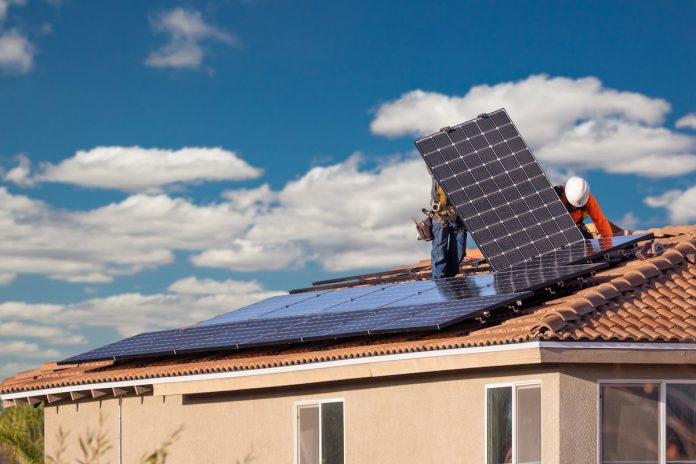A Homeowner’s Guide To Going Solar
Homeowners are always on the lookout for ways to save up on costs. After all, it takes significant time and money to maintain a household. Prices for food and other commodities are constantly increasing to the point that it’ll undoubtedly take all your penny-pinching power to stay on a budget. Simple hacks can help you get by, but there are several ways you can reduce your spending in the long term.
One way you can reduce household spending is by cutting down electricity costs. Apart from the usual energy-saving tips you’re practicing, you might want to consider a more permanent solution. Going solar is the way to go–not because your neighbor Ben says so but because it’s a better alternative for your home and the environment.
Solar Power Basics
You’re probably convinced that solar energy isn’t only a trend but also a great way to save up on energy, improve your home value, and save Mother Earth. But before you get too excited about the prospect, here are a few things you need to consider:
-
Price
The cost of a solar panel system is a common concern for many homeowners. It’s understandable since the installation costs range anywhere from $5,200 to $9,600 in Australia. The price may even differ depending on your location and the materials you plan to use.
But don’t let the price keep you from making the switch. Prices have decreased over the years that it’s now cheaper to install a system than five years ago. In addition to lower rates, you can also take advantage of recent technology for optimum performance.
-
Suitability
If price isn’t an issue, then you can go ahead and check if solar is suitable for your home. While it generally works in all areas, some locations can receive more sunlight or be hampered by trees or other structures.
Your roof’s direction also determines how much energy the solar power panels will produce during certain times of the day. North-facing solar panels generate the most electricity throughout the day, while east-facing panels have more in the morning and west-facing ones in the late afternoon. Aside from these, you may also need to ask your local council regarding requirements and installations procedures.
Following these guidelines can ensure your solar panel system is both compliant and efficient.
-
Components
A solar panel system is composed of solar panels, an inverter, a racking system, and consumption monitors. A tight fit between all these can ensure successful installation in your home.
Solar panels have two sizes–a 60 solar cell panel measuring 1m by 1.65m for homes and a larger 1m x 2m with 72 cells for businesses. Cell arrangements also differ, and you can choose from standard, half cut, or shingled. Half-cut or shingled styles work best when you’re dealing with shade or nearby trees.
The inverter is responsible for transforming the electricity produced by the solar panels into usable energy, lighting the appliances in your home. You can either choose a wall-mount string inverter, a micro-inverter attached to each solar panel, or a power optimizer that combines both.
Aluminum racking secures the solar panels on your roof and may even be adjusted. Consumption monitors complete the setup. This component tells you how much energy your system is producing and your consumption at certain times of the day.
-
Installation
When it comes to home use, experts recommend installing a 6.6 kW panel with a 5-kW inverter. You may need to go higher if you’re planning to use batteries or use an electric car in the future.
Aside from this, it would be best if you also considered your roof’s angle to optimize energy production. If your roof isn’t at the ideal angle, use tilt frames to compensate for the annual yield loss. They’re also crucial to keeping your panels clean and well-maintained.
While you might be tempted to DIY, installations are best carried out by professionals. They not only ensure safe and proper setups, but they’re also vital in receiving rebates. You can check local installers or find one on the net based on good reviews, Clean Energy Council (CEC) accreditation, and a business track for more than five years.
-
Grid Concerns
You may also wonder how your solar panel system connects to a larger energy grid. An installation offsets your usage. You save money off the energy your solar panels produce.
If your solar installation produces more energy than what you can consume, you may even get a feed-in tariff from your retailer. Personal consumption rates are essential since they can tell you how soon you can enjoy payback benefits.
-
Maintenance
One of the benefits of solar energy is that they’re easy to maintain. You only need to clean them with a leaf blower or a garden hose two to four times a year to ensure they’re in top condition. In case of heavy snowfall, you’ll need to wipe the panels with lukewarm water so the tempered glass won’t crack.
Solar panels also come with a warranty. You can consult professional installers or technicians if their output begins to decrease or if other problems arise.
Conclusion: guide to going solar
Homeowners can overcome concerns about going solar when they’re better informed. Knowing how it works, how much it costs, and its numerous benefits may convince you that solar is the best way to transform your residences into sustainable abodes.






